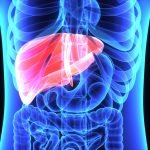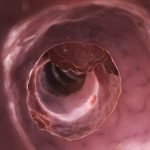Solidago: An Inflammation Modulator
Eric Yarnell, ND, and Lauren Russel, ND
Many if not most species of the genus Solidago (goldenrod) have been used in traditional medicine for millennia. The name Solidago means, in Latin, “to make whole” or “to make well,” a testament to its medicinal value.
This is one of the largest and most complex genera in the Asteraceae family (Jiang, 2006). Most species are found throughout temperate North America, where they grow wild along riverbanks, dry hillsides and in woodlands. It is also found in northern Africa, Europe and Asia. Goldenrod is easily recognizable for its tall spire of golden yellow flowers on a slim, firm stalk (some say resembling a spray of urine that reminds one of its diuretic activity) appearing in the summer.
Although Solidago virgaurea (European goldenrod) is perhaps the best known species, many others have similar medicinal properties. Studies have identified many of the therapeutically active constituents for S. canadensis, S. chilensis and S. gigantea (Vila et al., 2002). Dr. Yarnell has used S. canadensis (Canadian goldenrod) extensively in practice.
Solidago is an excellent inflammation-modulating, anti-allergenic herb. The belief that its pollen is a common allergen has been discredited and in fact shown to be due to coincidental blooming with ragweed (US Fish and Wildlife, n.d.). Goldenrod pollen is in fact too heavy to be wind-borne; it is insect-borne instead. This is an important lesson that one should take non-traditional information about herbs from lay and scientific literature with a grain of salt, particularly when it directly contradicts traditional medical uses.
Use for Urinary Tract Issues
Solidago has many recognized therapeutic actions, with the most important being diuretic and inflammation modulating. Solidago was considered by the late Rudolf Weiss, MD as the most reliable and potent herbal diuretic (Weiss, 2001). The saponin, flavonoid and terpenoid fractions are believed to confer this action; the phenolic glycoside leiocarposide has also particularly been shown to be active (Chodera, 1985; 1986; 1988). Solidago mainly acts as an aquaretic, dilating glomerular arterioles and thus increasing glomerular filtration rate and the water component of the urine. It remains to be seen if Solidago acts as a true diuretic, causing altered handling of electrolytes by nephrons, and thus helping with edema and hypertension. In a double-blind, placebo-controlled trial, aquaretic effects were noted in healthy volunteers after a single dose of 4ml Solidago tincture (Brühwiler et al., 1992).
One animal study demonstrated that concentrated extracts of Rhus aromatica (sweet sumach) and S. virgaurea effectively inhibited muscarinic-receptor mediated contractions in rat and human bladder tissue (Borchert et al., 2004). Such spasmolytic effects can help relieve pain in patients with lower urinary tract infections. One study comparing the effects of S. virgaurea (coupled with Populus tremula and Fraxinus excelsior) to that of diclofenac found they had comparable analgesic properties (el-Ghazaly et al., 1992). In vitro receptor binding assays using S. virgaurea have also identified phenolic compounds with analgesic potential (Sampson, 2000).
Given these actions, goldenrod is most appropriate as an adjunct to antimicrobial and immune-stimulating treatments in patients with urinary tract infections such as urethritis, cystitis, prostatitis, seminal vesiculitis and epididymitis. It is also helpful to prevent kidney stones, and can be used to help expel stones smaller than 5mm in diameter (assuming spasmolytics are used concomitantly).
Use for Respiratory Tract Issues
Before Echinacea came to Europe, Solidago was one of the first herbs considered for patients with upper respiratory tract catarrh. Its inflammation-modulating effects would be most useful for reducing symptoms, though it may also have mild anitmicrobial effects. For example, essential oils extracted from the leaves of S. chilensis demonstrated antifungal activity in vitro (Vila et al., 2002). Goldenrod is not a potent antimicrobial clinically and should not be depended on for this purpose.
With its anti-catarrhal, analgesic and inflammation-modulating actions, Solidago is an excellent choice for the treatment of allergic rhinitis and conjunctivitis. Also interesting in this regard is the fact that Solidago is a significant antioxidant (Apati et al., 2003).
Dosing
To prepare a goldenrod tea, steep 2-3tsp (5-15g) of good-quality herb (which should retain the golden color of the flowers) in 8oz (240ml) hot water, covered, for 20 minutes. The patient should drink one cup of this tea every two to three hours for acutes and two to three times a day for chronic problems. The dose of tincture is typically 3-5ml every two to three hours for acutes and two to three times per day for chronics. High alcohol tinctures appear to be more active (Apati et al., 2003).
Adverse Effects
Goldenrod generally has no adverse effects. It does not even tend to cause nausea. In fact, its diterpene constituent, solidagenone, is gastroprotective according to one study (Schmeda-Hirschmann et al., 2002).
The Cancer Possibility
One study found that S. virgaurea exhibited cytotoxic effects on breast, prostate, small-cell lung carcinoma and melanoma tumor cell lines (Gross, 2002). When S. virgaurea was injected into an animal model with prostate cell tumors, tumor suppression was noted at a dose of 5mg/kg with no adverse effects. In another study, triterpenoid saponin constituents of S. canadensis demonstrated potential anticancer activity (Chaturvedula et al., 2004). There is little clear historical evidence of use of goldenrod to treat cancer, so clinical trials are needed to determine if these results are relevant to humans.
Conclusion
With its wide variety of actions, Solidago is an excellent herb for patients with UTIs, and is worth adding to programs for patients with URIs and allergies. It is extremely safe.
 Eric Yarnell, ND is a graduate of Bastyr University. He completed a two-year residency with Silena Heron, ND, and served as chair of botanical medicine at SCNM. He is past senior editor of the Journal of Naturopathic Medicine. Dr. Yarnell is a founding member and current president of the Botanical Medicine Academy and author of numerous textbooks and articles, including Naturopathic Urology and Men’s Health, Naturopathic Gastroenterology and Clinical Botanical Medicine. His area of clinical focus is urology and men’s health. He is assistant professor in botanical medicine at Bastyr University. Contact: 6300 Ninth Ave NE, Ste 362, Seattle, WA 98115; 206-552-0054; www.dryarnell.com.
Eric Yarnell, ND is a graduate of Bastyr University. He completed a two-year residency with Silena Heron, ND, and served as chair of botanical medicine at SCNM. He is past senior editor of the Journal of Naturopathic Medicine. Dr. Yarnell is a founding member and current president of the Botanical Medicine Academy and author of numerous textbooks and articles, including Naturopathic Urology and Men’s Health, Naturopathic Gastroenterology and Clinical Botanical Medicine. His area of clinical focus is urology and men’s health. He is assistant professor in botanical medicine at Bastyr University. Contact: 6300 Ninth Ave NE, Ste 362, Seattle, WA 98115; 206-552-0054; www.dryarnell.com.
Lauren Russel, ND is a graduate of Bastyr University, currently focusing on therapies for cancer and endocrine disorders. She has been a medical writer and editor for many years, with numerous publications to her name.
References
Apati P et al: Herbal remedies of Solidago: Correlation of phytochemical characteristics and antioxidative properties, J Pharm Biomed Anal 32:1045-53, 2003.
Borchert V et al: Extracts from Rhois [sic] aromatica and Solidaginis virgaurea inhibit rat and human bladder contraction, Arch Pharmacol 369:281-286, 2004.
Brühwiler K et al: Research project on Solidago virgaurea tincture, Abstract SL 20. Fourth International Congress on Phytotherapy, September, Munich, Germany, 1992.
Chaturvedula VS et al: New lupane triterpenoids from Solidago canadensis that inhibit the lyase activity of DNA polymerase, Bioorg Med Chem 12:6271-5, 2004.
Chodera A et al: Diuretic effect of the glycoside from a plant of the Solidago L. genus (in Polish), Acta Polon Pharm 42:199-204, 1985.
Chodera A et al: Further studies on the diuretic effect of leiocarposide (in Polish), Acta Polon Pharm 43:499-503, 1986.
Chodera A et al: Effect of leiocarposide on experimental urinary calculi in rats (in Polish), Acta Polon Pharm 45:181-5, 1988.
el-Ghazaly M et al: Study of the anti-inflammatory activity of Populus tremula, Solidago virgaurea and Fraxinus excelsior, Arzneimittelforschung 42(3):333-6, 1992.
Gross SC et al: Antineoplastic activity of Solidago virgaurea on prostatic tumor cells in an SCID mouse model, Nutr Cancer 43(1):76-81, 2002.
Jiang T et al: A survey of chemical and pharmacological studies on Solidago, Journal of Chinese Integrative Medicine Jul;4(4):430-5, 2006.
Sampson JH et al: Ethnomedically selected plants as sources of potential analgesic compounds: Indication of in vitro biological activity in receptor binding assays, Phytother Res 14:24-29, 2000.
Schmeda-Hirschmann G et al: Gastroprotective activity of the diterpene solidagenone and its derivatives on experimentally induced gastric lesions in mice, J Ethnopharmacol 81:111-5, 2002.
US Fish and Wildlife: Houghton’s goldenrod (Solidago houghtonii), www.fws.gov/Midwest/Endangered/plants/houghton.html.
Vila R et al: Composition and antifungal activity of the essential oil of Solidago chilensis, Planta Med 68:164-167, 2002.
Weiss RF: Herbal Medicine (Classic ed), New York, 2001, Thieme Medical Publ.








